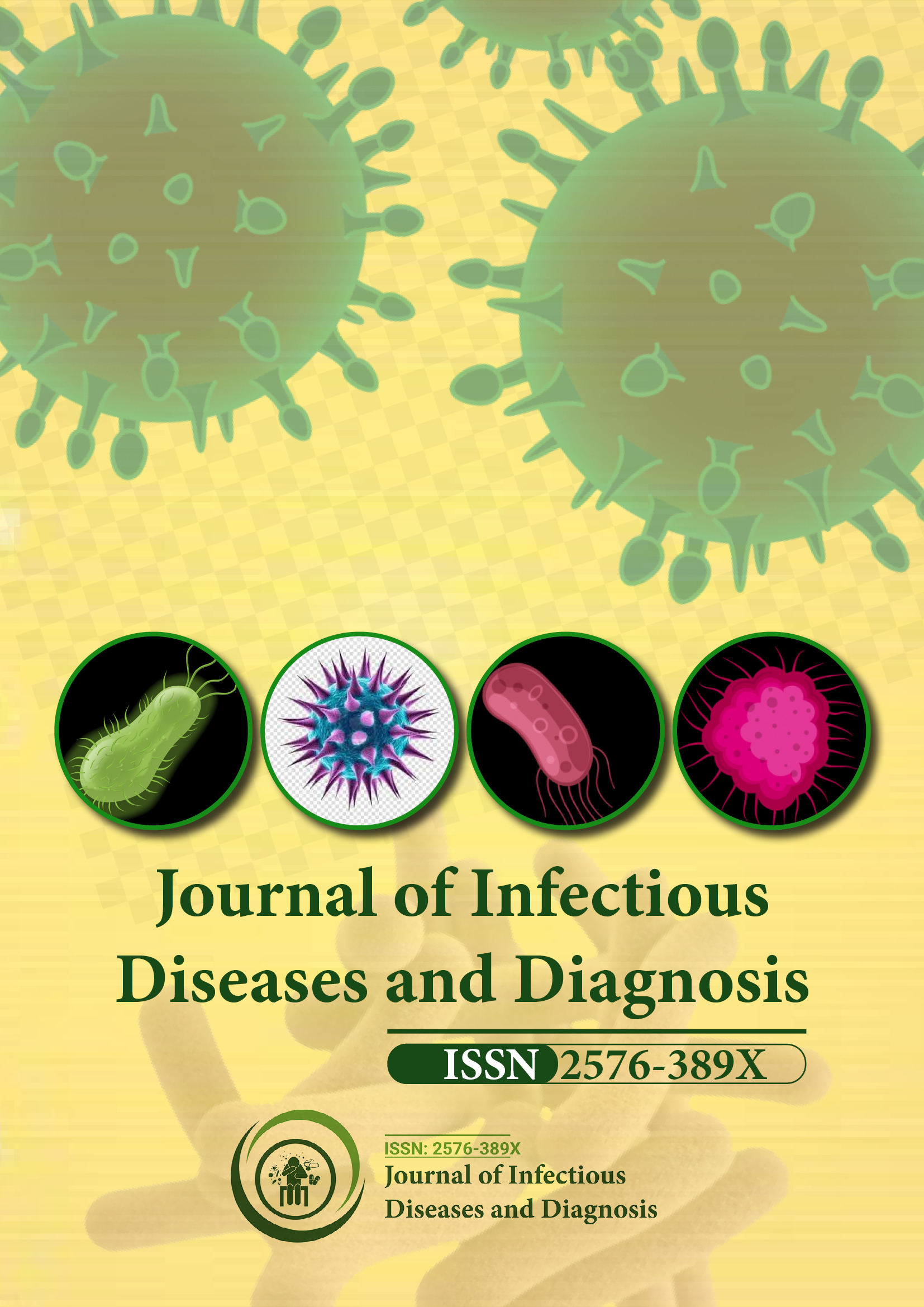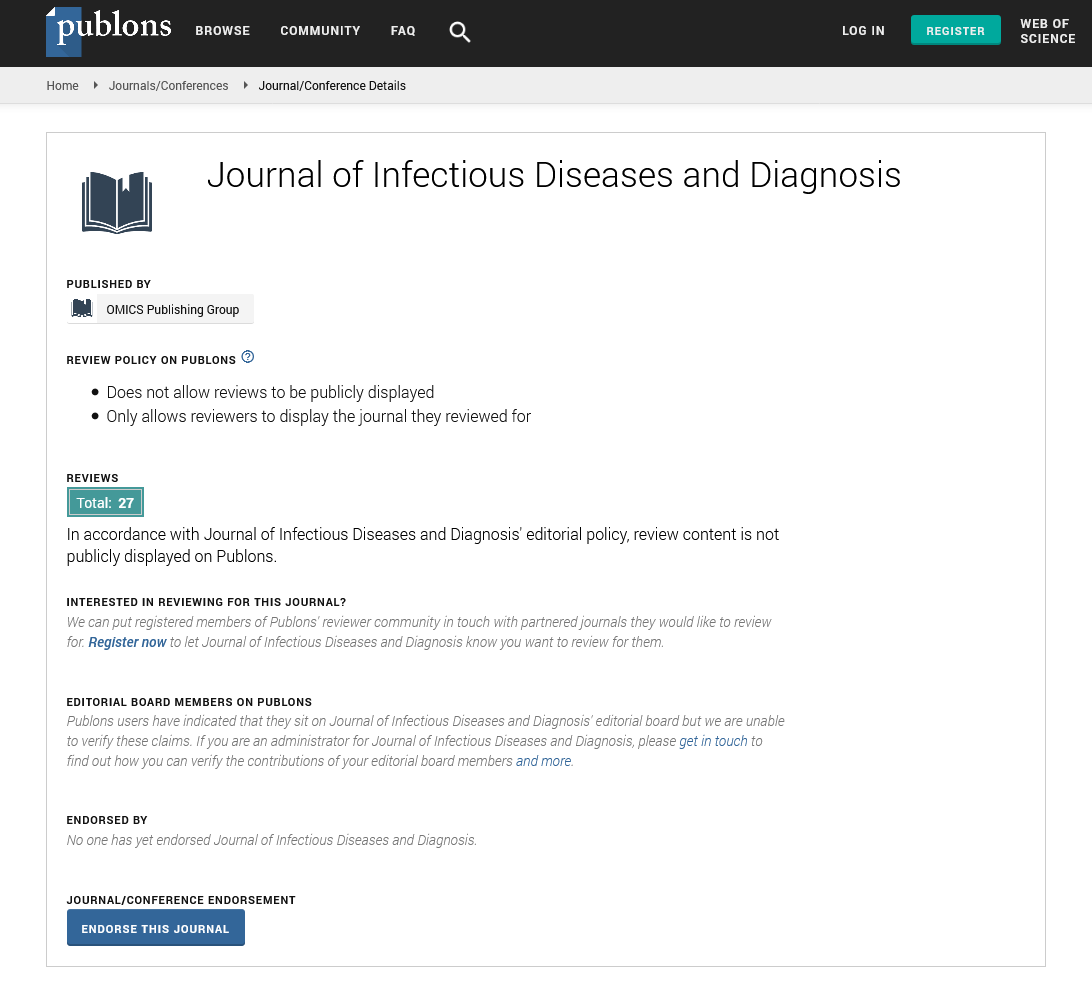Indexed In
- RefSeek
- Hamdard University
- EBSCO A-Z
- Publons
- Euro Pub
- Google Scholar
Useful Links
Share This Page
Journal Flyer

Open Access Journals
- Agri and Aquaculture
- Biochemistry
- Bioinformatics & Systems Biology
- Business & Management
- Chemistry
- Clinical Sciences
- Engineering
- Food & Nutrition
- General Science
- Genetics & Molecular Biology
- Immunology & Microbiology
- Medical Sciences
- Neuroscience & Psychology
- Nursing & Health Care
- Pharmaceutical Sciences
Commentary - (2025) Volume 10, Issue 4
Respiratory Tract Infections: Epidemiology, Clinical Features and Management
Nick Pauling*Received: 30-Jun-2025, Manuscript No. JIDD-25-29506; Editor assigned: 03-Jul-2025, Pre QC No. JIDD-25-29506 (PQ); Reviewed: 17-Jul-2025, QC No. JIDD-25-29506; Revised: 24-Jul-2025, Manuscript No. JIDD-25-29506 (R); Published: 31-Jul-2025, DOI: 10.35248/2576-389X.25.10.339
Description
Respiratory Tract Infections (RTIs) are among the most common health problems worldwide, affecting individuals across all age groups. They encompass a wide range of conditions involving the upper and lower respiratory systems, such as the common cold, influenza, bronchitis, pneumonia and tuberculosis. These infections can be caused by viruses, bacteria, or, less frequently, fungi and parasites. RTIs remain a major contributor to global morbidity and mortality, particularly in low- and middle-income countries, where access to healthcare resources may be limited. Understanding their causes, modes of transmission, clinical features and strategies for management is essential to reducing the burden they place on public health systems.
Etiology and pathogens
The pathogens responsible for respiratory tract infections vary depending on whether the upper or lower tract is affected. Upper Respiratory Tract Infections (URTIs) include conditions such as rhinitis, pharyngitis, tonsillitis, sinusitis and laryngitis. These are most often caused by viruses such as rhinoviruses, adenoviruses, influenza viruses, parainfluenza viruses and coronaviruses. In some cases, bacterial agents including Streptococcus pyogenes and Haemophilus influenzae are involved.
Lower Respiratory Tract Infections (LRTIs), including bronchitis, bronchiolitis and pneumonia, are generally more severe. Viral causes include Respiratory Syncytial Virus (RSV), influenza virus and human metapneumovirus. Bacterial pathogens such as Streptococcus pneumoniae, Klebsiella pneumoniae and Mycoplasma pneumoniae are significant contributors to pneumonia. In certain regions, Mycobacterium tuberculosis remains a major cause of chronic lower respiratory disease, accounting for substantial illness and death.
Modes of transmission
Respiratory pathogens are typically spread through droplets expelled when an infected person coughs, sneezes, or talks. Smaller particles, known as aerosols, may remain suspended in the air for extended periods, contributing to transmission of diseases such as tuberculosis and influenza. Direct contact with contaminated surfaces or objects can also facilitate spread, as individuals may touch their face after contacting infectious particles. Factors such as overcrowding, poor ventilation and inadequate hygiene increase transmission risks, making prevention strategies particularly important in community and healthcare settings.
Clinical features
The symptoms of respiratory tract infections vary depending on the site of involvement and the causative organism. URTIs often present with nasal congestion, sore throat, cough, mild fever and general malaise. These infections are usually self-limiting but may occasionally progress to bacterial complications such as sinusitis or otitis media.
LRTIs tend to produce more severe symptoms, including persistent cough, shortness of breath, chest pain, wheezing and high fever. Pneumonia, a common LRTI, may manifest with difficulty breathing, cyanosis and productive cough with purulent or blood-stained sputum. In infants, older adults and immunocompromised individuals, respiratory tract infections can quickly become life-threatening, requiring prompt medical attention.
Risk factors
Several factors increase susceptibility to respiratory tract infections. Age plays a significant role, as children under five and elderly adults are more vulnerable. Other risk factors include chronic diseases such as diabetes, asthma, Chronic Obstructive Pulmonary Disease (COPD) and cardiovascular disorders. Smoking damages the respiratory epithelium and impairs clearance of pathogens, further increasing infection risk. Poor nutritional status, environmental pollution and overcrowded living conditions also contribute significantly to the burden of RTIs.
Diagnosis
Accurate diagnosis is essential for appropriate management. Clinical evaluation, including history-taking and physical examination, provides important clues. Laboratory investigations such as throat swabs, sputum cultures, Polymerase Chain Reaction (PCR) tests and serology may be used to identify causative organisms. Chest radiographs and Computed Tomography (CT) scans can help evaluate lower respiratory tract involvement. Point-of-care diagnostic tools have gained importance in recent years, allowing rapid detection of pathogens like influenza and SARS-CoV-2, thereby guiding timely interventions.
Treatment and management
Management of respiratory tract infections depends on the pathogen, severity and patient characteristics. Viral URTIs typically require only supportive care, including hydration, rest, analgesics and antipyretics. Antiviral drugs may be used for influenza or severe viral infections when indicated.
Bacterial RTIs necessitate antibiotic therapy, with the choice of drug guided by the suspected or confirmed organism. For instance, amoxicillin or macrolides are often used for bacterial pneumonia. Overuse and misuse of antibiotics, however, have contributed to rising antimicrobial resistance, making it important to prescribe them judiciously. Severe cases may require hospitalization, oxygen therapy, or intensive care support.
Adjunctive therapies such as bronchodilators and corticosteroids may be used in patients with underlying respiratory conditions like asthma or COPD to reduce inflammation and improve airflow. For tuberculosis, long-term multidrug regimens are required to prevent resistance and achieve complete cure.
Prevention strategies
Prevention remains the most effective approach to reduce the impact of respiratory tract infections. Vaccination plays a central role, with immunizations available for influenza, pneumococcal disease, pertussis and, more recently, COVID-19. Promoting widespread vaccination coverage has significantly reduced incidence and severity of these infections.
Non-pharmacological measures are also important. Good hand hygiene, respiratory etiquette and mask use reduce transmission in community settings. Adequate ventilation in indoor environments and reduction of air pollution contribute to lowering risks. For tuberculosis, early detection and treatment of active cases combined with preventive therapy in high-risk populations are effective public health measures.
Conclusion
Respiratory tract infections are a significant burden on public health systems worldwide, ranging from mild self-limiting conditions to life-threatening illnesses. Their impact is influenced by pathogen diversity, transmission dynamics and host-related factors. Effective management requires accurate diagnosis, rational use of antimicrobials, supportive care and widespread implementation of preventive measures such as vaccination and hygiene practices. Continued efforts in research, global cooperation and health system strengthening are essential to reduce the burden of these infections and improve outcomes for vulnerable populations.
Citation: Pauling N (2025). Respiratory Tract Infections: Epidemiology, Clinical Features and Management. J Infect Dis Diagn. 10:339.
Copyright: © 2025 Pauling N. This is an open-access article distributed under the terms of the Creative Commons Attribution License, which permits unrestricted use, distribution and reproduction in any medium, provided the original author and source are credited.

